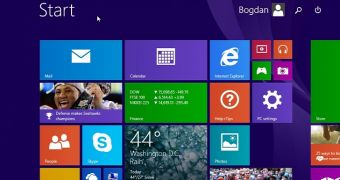April is going to be quite a busy month of Microsoft, as the company will hold the BUILD 2014 developer conference in San Francisco that would basically witness the introduction of Windows 8.1 Update, while Redmond is also expected to share some details on the upcoming Windows 9.
Word is that MSDN subscribers could get Windows 8.1 Update before everyone else, as Microsoft is planning to give developers a chance to try out the upcoming pack of improvements in time for the debut of the BUILD event.
This way, Microsoft could get in touch with developers and collect feedback directly, while all users are expected to receive the update later the next month on April 8. Windows 8.1 Update will be delivered via Windows Update as a free download for everyone already running Windows 8.1.
If Windows 8.1 Update is indeed posted on MSDN in early April, it’s only natural to expect the installers to leak to the web soon after that, so those who can’t wait until Microsoft starts shipping the improvements to users via Windows Update will be able to deploy the new version manually in the next couple of days.
Rumor has it that Microsoft is also planning to release stand-alone ISO images with the upcoming Windows 8.1 Update, which would basically mean that users can install the operating system from scratch, without the need for the original installers shipped by Microsoft via Windows Update.
Windows 8.1 Update will bring quite a lot of changes to Microsoft’s core modern platform, including options that would enable users to pin Metro apps to the taskbar and launch them faster. This is actually paving the road for a much bigger improvement in Windows 9 that would basically merge the desktop and the Modern UI for a mix supposed to boost the adoption of the touch-based environment.
At the same time, Microsoft is also trying to spur the adoption of the Metro UI by adding features more appropriate for desktop computers, such as context menu-like options, power controls and a search bar straight on the Start screen, as well as links to the desktop Control Panel placed in the PC settings screen.
Some tweaks to the boot-to-desktop option are also expected to be made on desktop computers in order to skip the Start screen by default and thus make the operating system more appropriate for non-touch devices which are still relying on the mouse and keyboard as the main input method.

 14 DAY TRIAL //
14 DAY TRIAL //